Inspiration can come in many forms, and that is true across every medium known to man. For this reason, it’s always interesting to hear what’s led to someone coming up with the idea for a game, movie, book, painting or something else that requires creative thought.
The horror genre, in particular, is steeped in folklore, tradition and old wives tales. Yes, people dream and imagine much of what we see, watch, read and play within this spooky category, but sometimes the inspiration comes from stories passed down through generations. In the case of Wales Interactive’s latest, Maid of Sker, the latter is true. You see, this game was inspired by Welsh folklore. It also shares the same name as a three part novel that was published in the late 1800s. However, as you’ll perhaps discover through research, the game and the book have differing plots and settings.
This video game version of Maid of Sker is, to put it simply, a first-person horror game that combines walking simulator, light puzzle and stealth mechanics. It is almost entirely set within one location, that being the old and majestic Sker Hotel, which was due to celebrate its grand reopening before things got strange. It’s very dark, very claustrophobic, and only sometimes ventures outside.
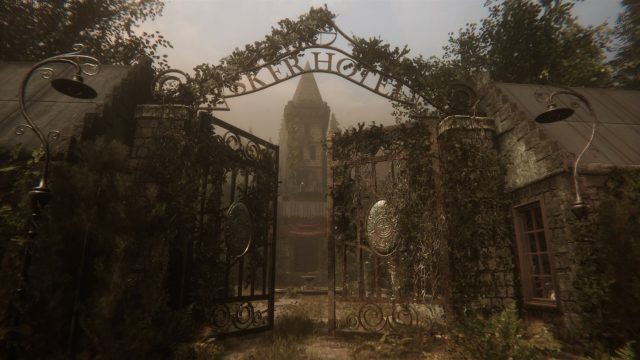
Things begin on an old time train, during what seems to be the autumn of 1898. There, we begin to control a composer by the name of Thomas, who’s been summoned to the Sker Hotel (which is actually based on a real building) through a letter. You see, his dear Elisabeth Williams, whose family owns and operates the hotel, has urged him to come save her from captivity. Her father has locked her in the attic, and wants her to take on the role her mother — a fellow singer — embodied. This plot is at least loosely based on an old folktale that says the real life Sker House is haunted by the ghost of one Elisabeth Williams, whose father locked her up to prevent her from running away with her lover. This led to her (apparently) dying of a broken heart.
As you get off the train and begin to approach the hotel, everything is peaceful but very quiet. It isn’t long before weird things start to happen, either, as a mysterious light organism appears in a field you need to bypass to get to the building’s unlocked second gate. Then, once you’re in the building, it becomes obvious that something is very, very wrong. Not a soul can be seen in the main entryway or in its adjoining main hall, and things are simply too quiet.
What you’ll come to learn upon answering a phone call and speaking to Elisabeth, is that she’s locked in the attic and requires four different musical cylinders to set herself free. That, plus the fact that Sker Hotel is populated by deformed human beings who cannot see, but have very adept hearing. They’re dangerous, she warns, and she’s very, very right about that.
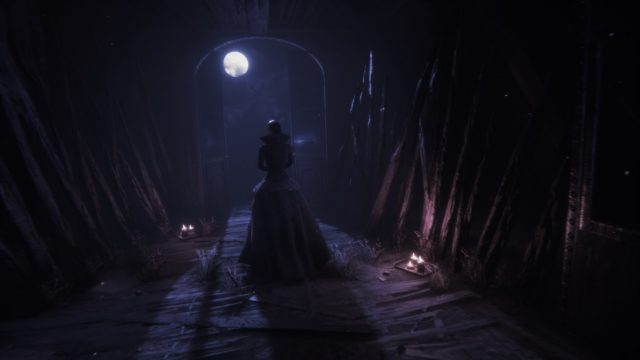
All of the above melts down into a game that is about sneaking through a cold, dark and formerly glamorous building in search of things. You’ll have to crouch and almost crawl past enemies whilst holding your breath in order to keep them from hearing you, else they’ll attack through melee means. All the while, you’ll use maps and solve puzzles to get from point A to point B and find the secrets that reside within the hotel’s four floors (basement, first floor, second floor and attic) and the large garden, crypts and cemetery that flank it outside. This will involve the time old survival horror tradition of finding keys, along with multiple types of collectibles such as notes, musical sheets, musical dolls and that kind of thing. Oddly enough, the quiet ones are not drawn to the melodic dolls, even though they’re constantly playing. Nor do they really seem to notice when you open and close doors.
The game doesn’t tell you this, but it actually has two different endings which depend on what you decide at the end. I won’t spoil things, but if you collect all four of one item you’ll trigger one ending. If you collect four of another, you’ll trigger the other ending. One is labelled as being the good ending, while the other is fittingly named the bad ending. That said, I’m not particularly sure which one is canon, or if one is supposed to be more important than the other. I must admit, though, that I ended up getting the bad ending.
Maid of Sker doesn’t rewrite the rules or do anything revolutionary, but it is interesting that its enemies only react to sound. This could’ve allowed for more creativity than was shown within the campaign, but it worked pretty well nonetheless. For instance, there’s no way to really lure enemies, nor do you have much at your disposal until close to halfway through the game. I get that being unarmed is often scarier than having weapons, but distractions could’ve worked.
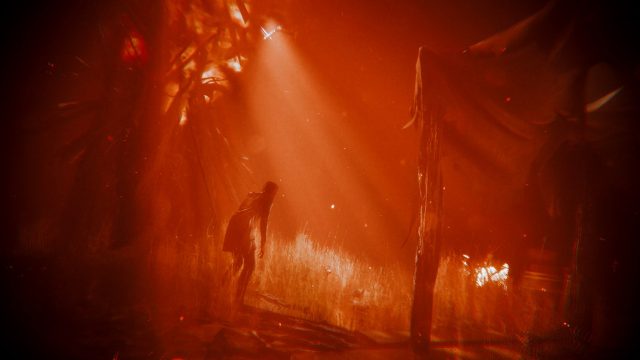
You do, however, end up getting a phonic modulator, which is a ball-type thing that uses audio cartridges to emit sound waves. Using one of its limited pieces of ‘ammunition’ will momentarily stun enemies who may be chasing and threatening you, or perhaps about to kill you. Be warned, though, that said tubes or cartridges are very limited. I ran out about 30-45 minutes before the end of the game, and it was right when I needed them most. Hell, I’d even been trying to be careful, and attempting to use them wisely. I only realized that I’d used the last one when an achievement popped.
The enemies in this game also tend to be both uneven and unpredictable, which doesn’t keep frustration at bay. Sometimes they’ll react to almost nothing, while at other times they won’t seem to hear things they should. At times, they’ll also chase you like bloodhounds, as if they’ve caught your scent, even if you seem to be being quiet and happen to be out of their normal pathways. However, as long as you watch their paths and understand their routines, they’re not too difficult to avoid, so long as you’re stealthy and hold your breath a lot. Crouching also helps a ton.
That kind of goes out the window near the end, though, because Maid of Sker then introduces its own version of Mr. X from Resident Evil 2. This massive, stomping asshole follows you throughout the second floor, and doesn’t really let up. He also happens to one hit kill Thomas on any difficulty except for easy, which I eventually dropped things down to out of frustration and wanting to get to the credits. Health tonics seemed to become more limited (or at least harder to spot) later on, and I was running out of them despite being careful and thoroughly exploring almost every one of the many rooms I ventured through. I’d even had a good stock at one point; at least until I met him.
This particular enemy kind of defeats everything that’s instilled in you throughout the previous hours of the campaign, during which you’re told that being quiet will keep enemies at bay. Yes, being quiet helps you avoid this monster, but he’s pretty adept and doesn’t really let up once he’s on your tail. This led to me running through the second floor, not caring if I triggered another enemy or two, because it was hard to walk and avoid his big stride. I was also trying to get from one point to another, to get the second floor’s cylinder.
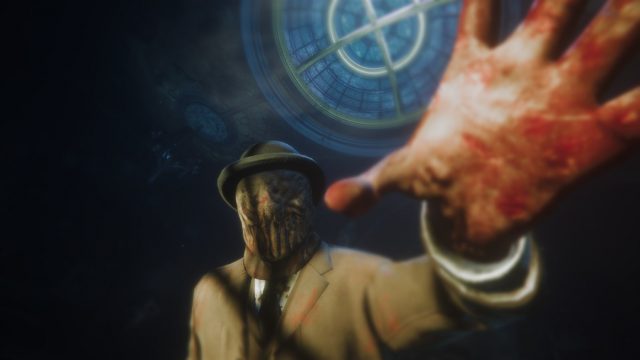
Frustration also occurred the couple of times I got lost. While I take full responsibility for the first time (during which I missed a puzzle close to halfway through, went too far away and ended up restarting the game because I was so lost), the second was a mixture of being my fault and the game’s. You see, the map screen shows all of the cylinders and music sheets you’ve found, but it doesn’t necessarily do so in order. It’s easy to miss three out of four of them, but even if you collect them in campaign order you’ll find that you’ve picked up the fourth before the third. This will be made evident by a dark hole in the map between cylinders two and four.
What happened was that I got away from the big guy, found the last cylinder and then realized that I hadn’t found the third one. Since I didn’t know that I’d find it last, through narrative progression, I then spent a good thirty to sixty minutes scouring a couple of other floors in search of it. I eventually turned to a guide out of frustration and confusion, which has rarely been my thing (as I like to beat games on my own), and noticed that it was located in an area that wasn’t shown on my map. After looking at the guide’s map, I then saw that I was supposed to continue on and not go back in search of that third cylinder, despite the game basically suggesting I needed to find them all before I ventured to the attic. There was a puzzle up there that I hadn’t noticed, because I was simply following the orders I got earlier and was focused on finding the cylinders.
It’s things like that, which couple with Maid of Sker‘s missing polish and keep it from being downright good. As it stands, this is a merely decent game that is unspectacular and will only appeal to a certain type of gamers. That being folks who like slower-paced horror games, during which they’ll do a lot of walking and exploring, along with a bit of light puzzle solving.
Another thing is that Maid of Sker isn’t terribly scary. Its premise is built for terror, but there are only a few jump scares or memorable moments during the campaign. This does not count the Mr. X clone, because he’s more annoying than anything, and is only scary when he first appears. Yes, the enemies are frightening at first, and a couple of the death animations can be unnerving, but once you realize how to get past foes without triggering them it becomes pretty routine. That said, when they do surprise you and come out of nowhere (despite there normally being an audio cue), it might make you jump. After all, they can attack from behind and without any warning.
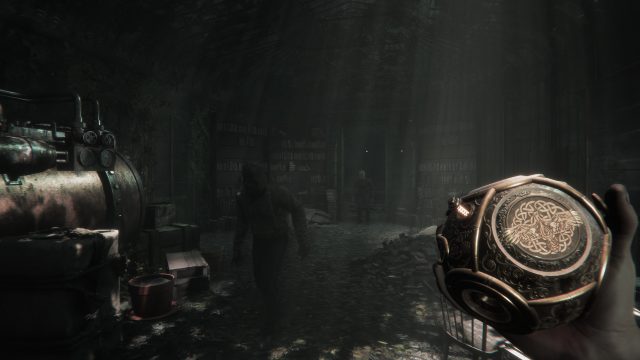
There’s also nothing terribly unique about this thing. It’s one of the better Wales Interactive games I’ve played (with The Complex being my favourite out of the limited four or five I’ve completed), but it’s not all that original in terms of mechanics or story beats. It’s solid and decently built, but also dated and familiar. Outlast and Outlast 2 did this type of thing better.
I reviewed this one using our Xbox One X console, and didn’t have any major issues or any crashes. However, the game’s character models and their textures aren’t the sharpest, and there was often a blurriness to the visuals that kept them from standing out or being as good as they could’ve been. Things looked best during outdoor sequences, such as the beginning (when it was sunny) and the sequence that takes place in the church/crypt/etc. The bonfires, red lighting and natural environmental factors stood out most.
The best part of this game, though, has to be its music and overall sound design. The team behind it deserves credit for delivering a soundscape that features haunting music, some of which is sung and/or delivered over gramophone, as well as creepy effects that create a surreal and menacing atmosphere. The limited dialogue — which is mostly spoken between Thomas and Emily over the phone — is also pretty well written, especially given the type of game this is, and the acting is solid too.
Speaking of the gramophones, it’s important to note that they’re the only way you can save your progress. There are approximately 15 of them, but they’re spread out quite a bit, meaning that dying will often force you to redo somewhat lengthy sections, which can get annoying. Linearly, this is only a 3-3.5 hour long game, but it took me a decent amount longer because I both restarted after getting halfway through, and got lost a couple of times.
At the end of the day, Maid of Sker is a mixed bag, although it’s one that has more things going for it than not. Those who like this type of game should enjoy it, so long as they don’t go in expecting something incredibly polished or original. The focus on sound and music is an interesting one, although more could’ve been done to take advantage of those themes.
This review is based on the Xbox One version of the game, which we were provided with.

